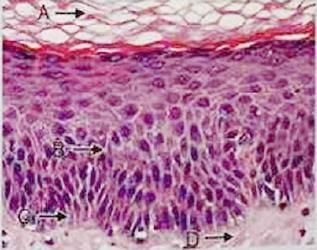NEET PG Exam > NEET PG Tests > Test: Anatomy and Physiology of Skin - NEET PG MCQ
Test: Anatomy and Physiology of Skin - NEET PG MCQ
Test Description
15 Questions MCQ Test - Test: Anatomy and Physiology of Skin
Test: Anatomy and Physiology of Skin for NEET PG 2025 is part of NEET PG preparation. The Test: Anatomy and Physiology of Skin questions and answers have been prepared
according to the NEET PG exam syllabus.The Test: Anatomy and Physiology of Skin MCQs are made for NEET PG 2025 Exam.
Find important definitions, questions, notes, meanings, examples, exercises, MCQs and online tests for Test: Anatomy and Physiology of Skin below.
Solutions of Test: Anatomy and Physiology of Skin questions in English are available as part of our course for NEET PG & Test: Anatomy and Physiology of Skin solutions in
Hindi for NEET PG course.
Download more important topics, notes, lectures and mock test series for NEET PG Exam by signing up for free. Attempt Test: Anatomy and Physiology of Skin | 15 questions in 20 minutes | Mock test for NEET PG preparation | Free important questions MCQ to study for NEET PG Exam | Download free PDF with solutions
Test: Anatomy and Physiology of Skin - Question 3
In which of the following conditions does parakeratosis most frequently occur?
Test: Anatomy and Physiology of Skin - Question 4
Sweat glands of palm can be differentiated from others by the following:
Detailed Solution for Test: Anatomy and Physiology of Skin - Question 5
Detailed Solution for Test: Anatomy and Physiology of Skin - Question 6
*Multiple options can be correct
Detailed Solution for Test: Anatomy and Physiology of Skin - Question 8
Test: Anatomy and Physiology of Skin - Question 9
All statements are true regarding skin except:
Test: Anatomy and Physiology of Skin - Question 10
Which layer of epidermis is under developed in VLBW infants in the initial 7 days?
Detailed Solution for Test: Anatomy and Physiology of Skin - Question 10
Detailed Solution for Test: Anatomy and Physiology of Skin - Question 12
Test: Anatomy and Physiology of Skin - Question 13
Layer of skin with maximum desmosome interconnection is depicted by which arrow?

Detailed Solution for Test: Anatomy and Physiology of Skin - Question 13
*Multiple options can be correct
Detailed Solution for Test: Anatomy and Physiology of Skin - Question 14
Detailed Solution for Test: Anatomy and Physiology of Skin - Question 15
Information about Test: Anatomy and Physiology of Skin Page
In this test you can find the Exam questions for Test: Anatomy and Physiology of Skin solved & explained in the simplest way possible.
Besides giving Questions and answers for Test: Anatomy and Physiology of Skin , EduRev gives you an ample number of Online tests for practice
Download as PDF














